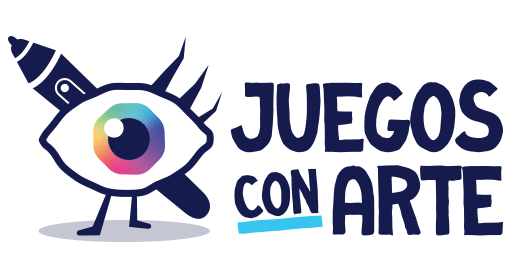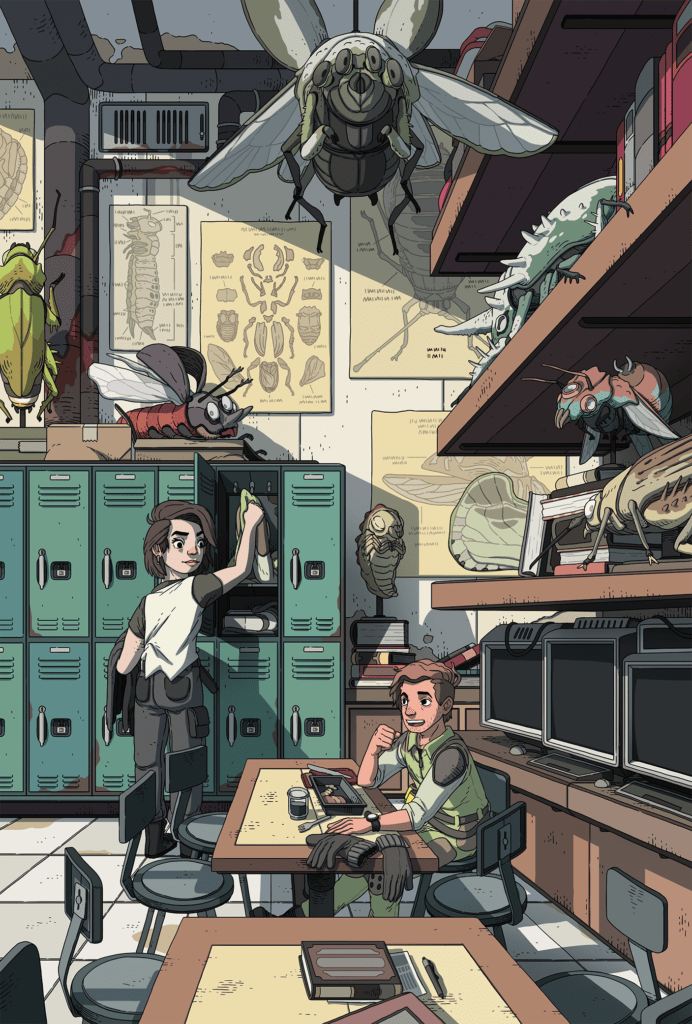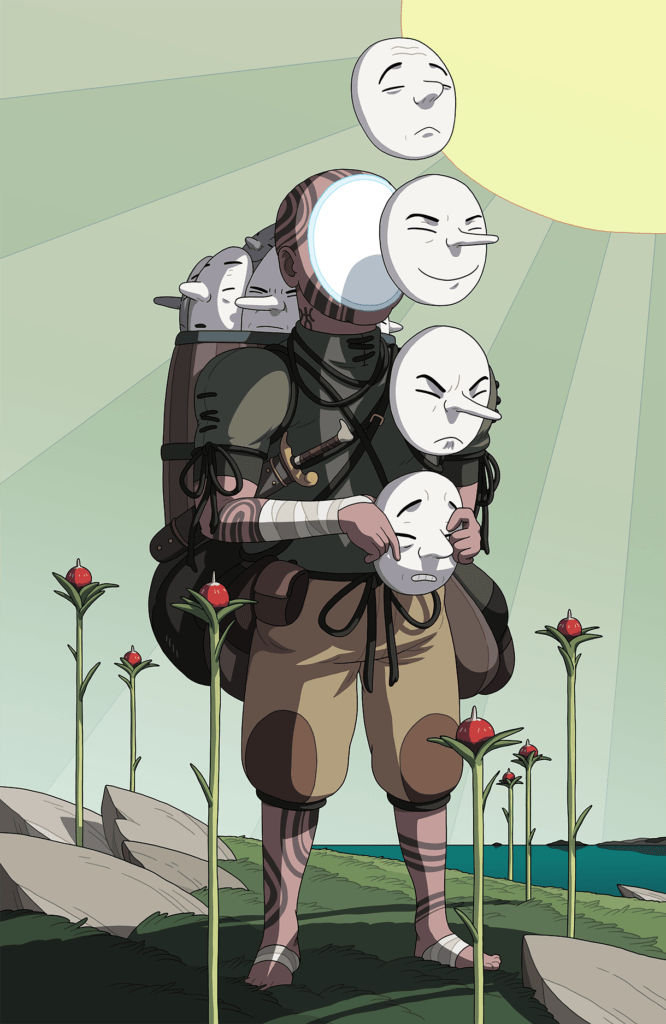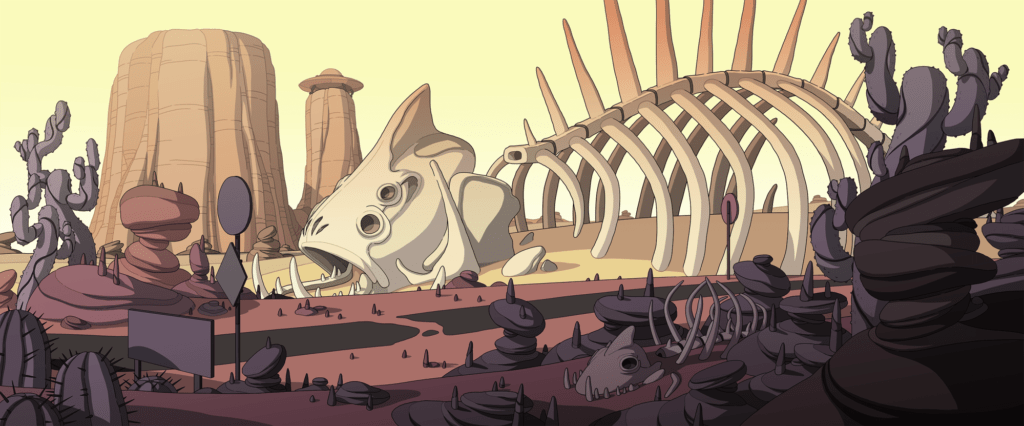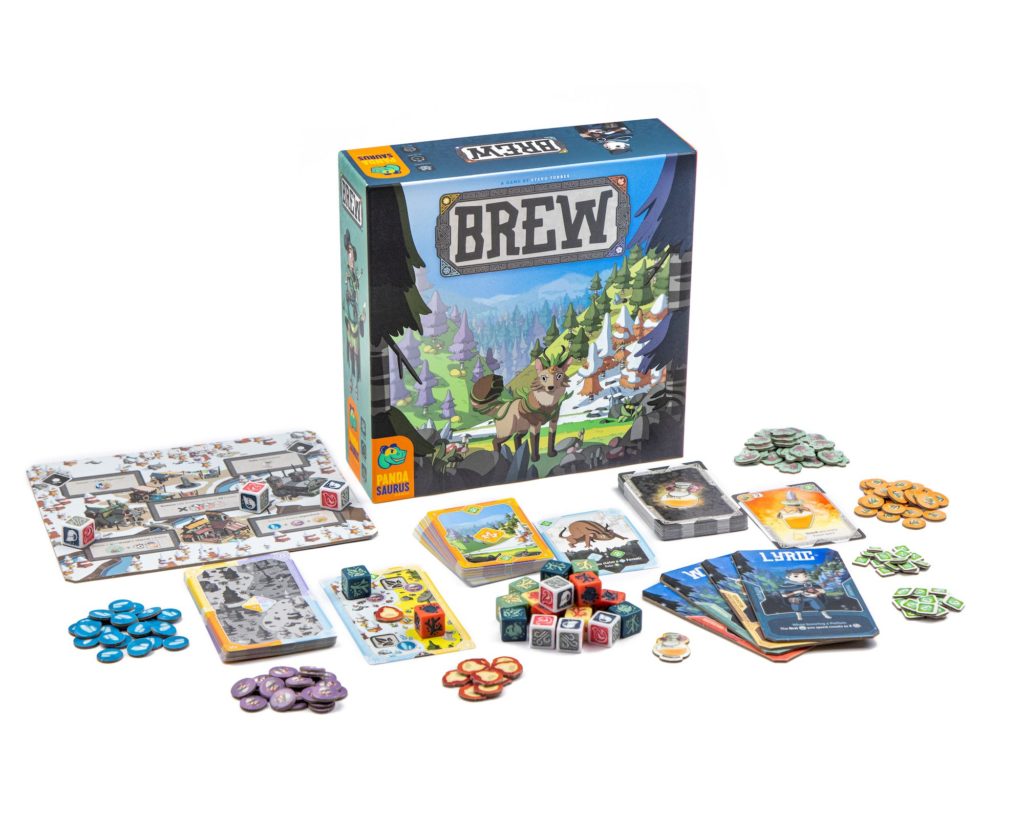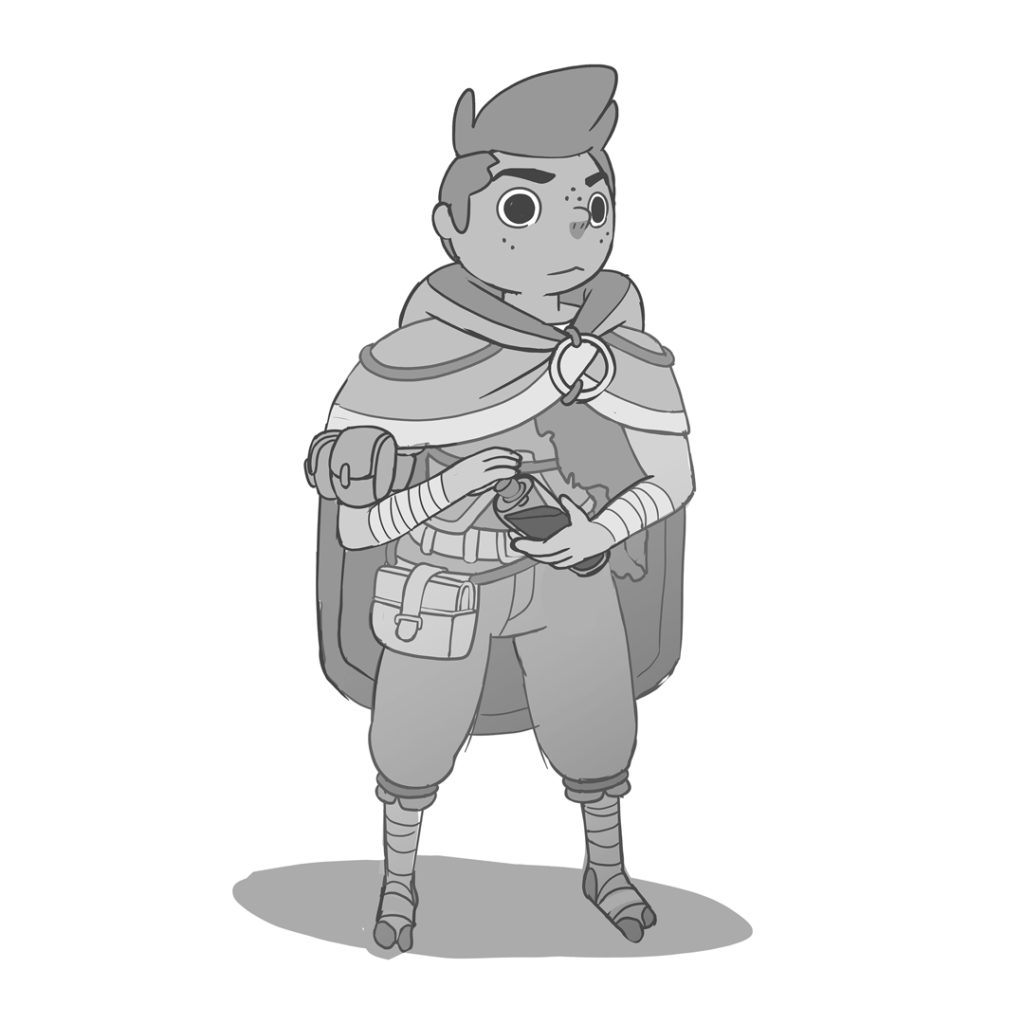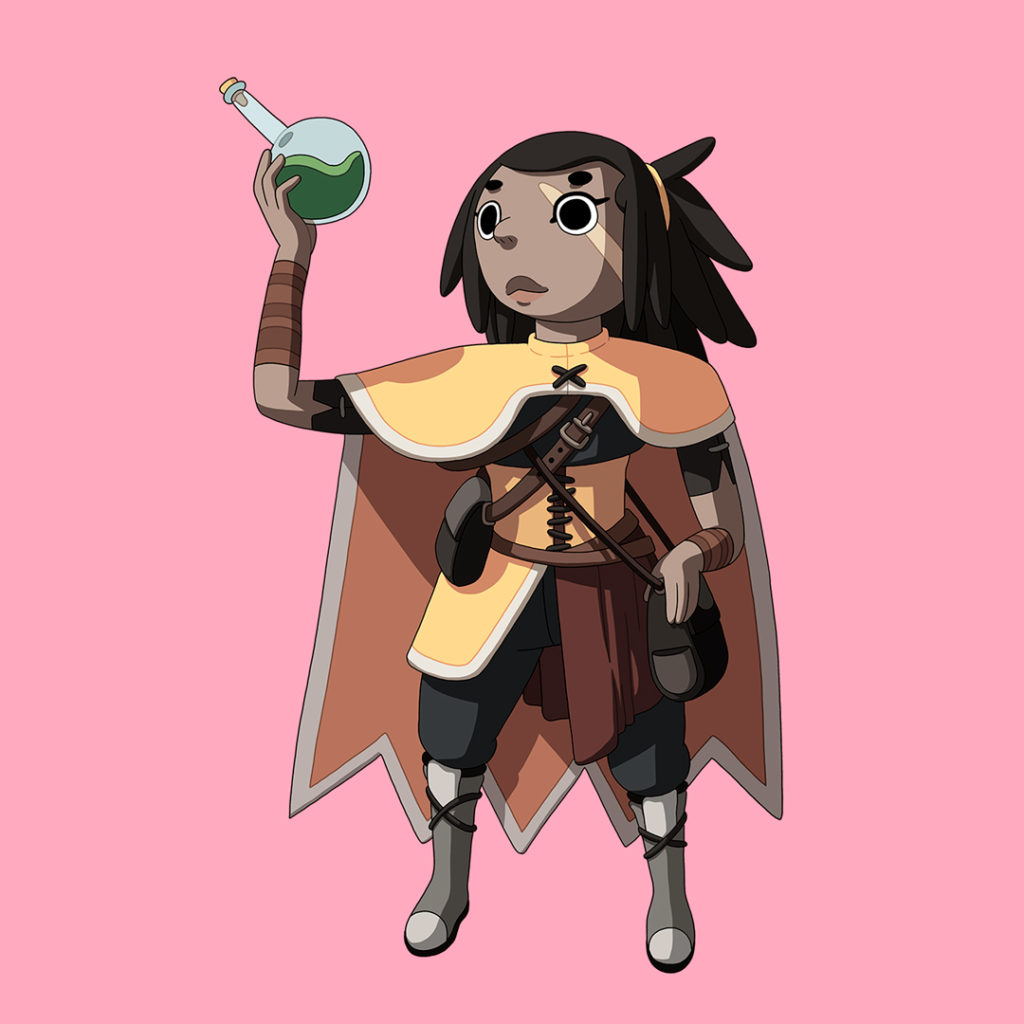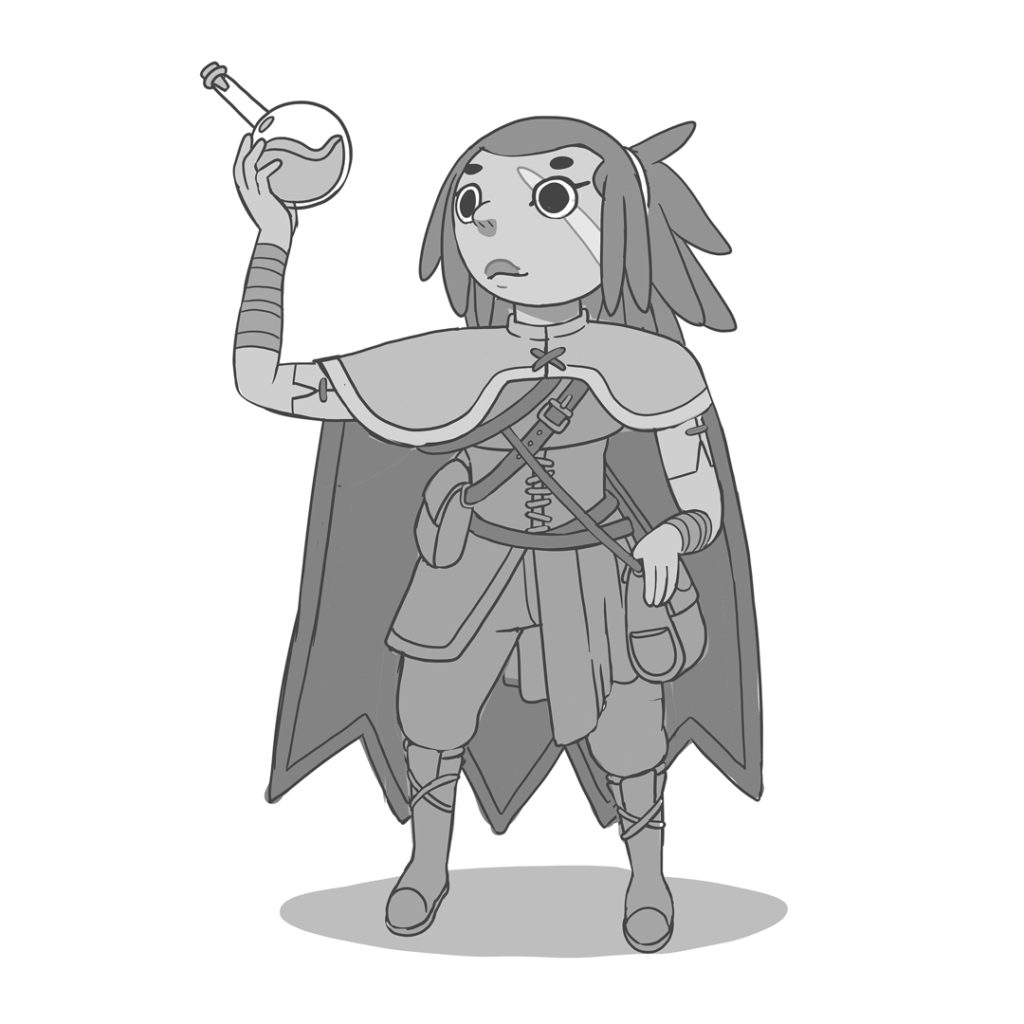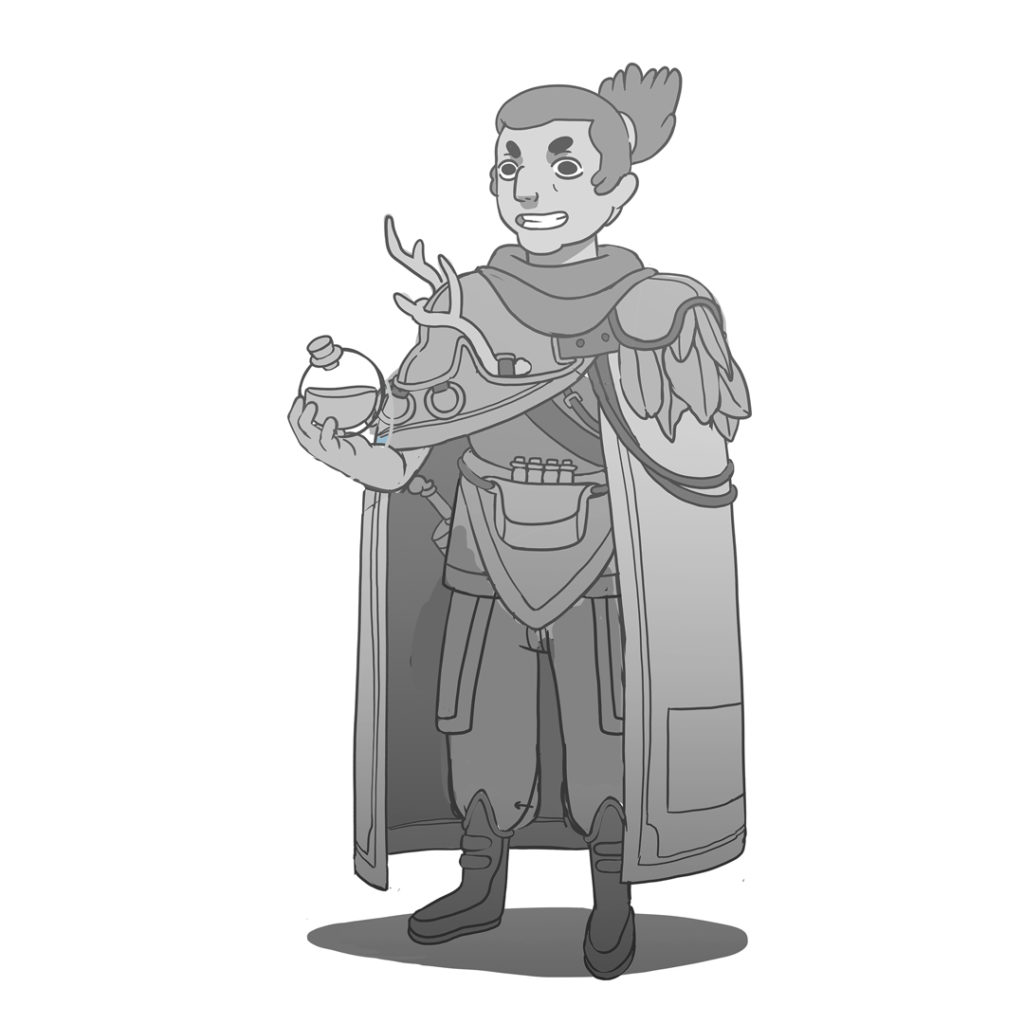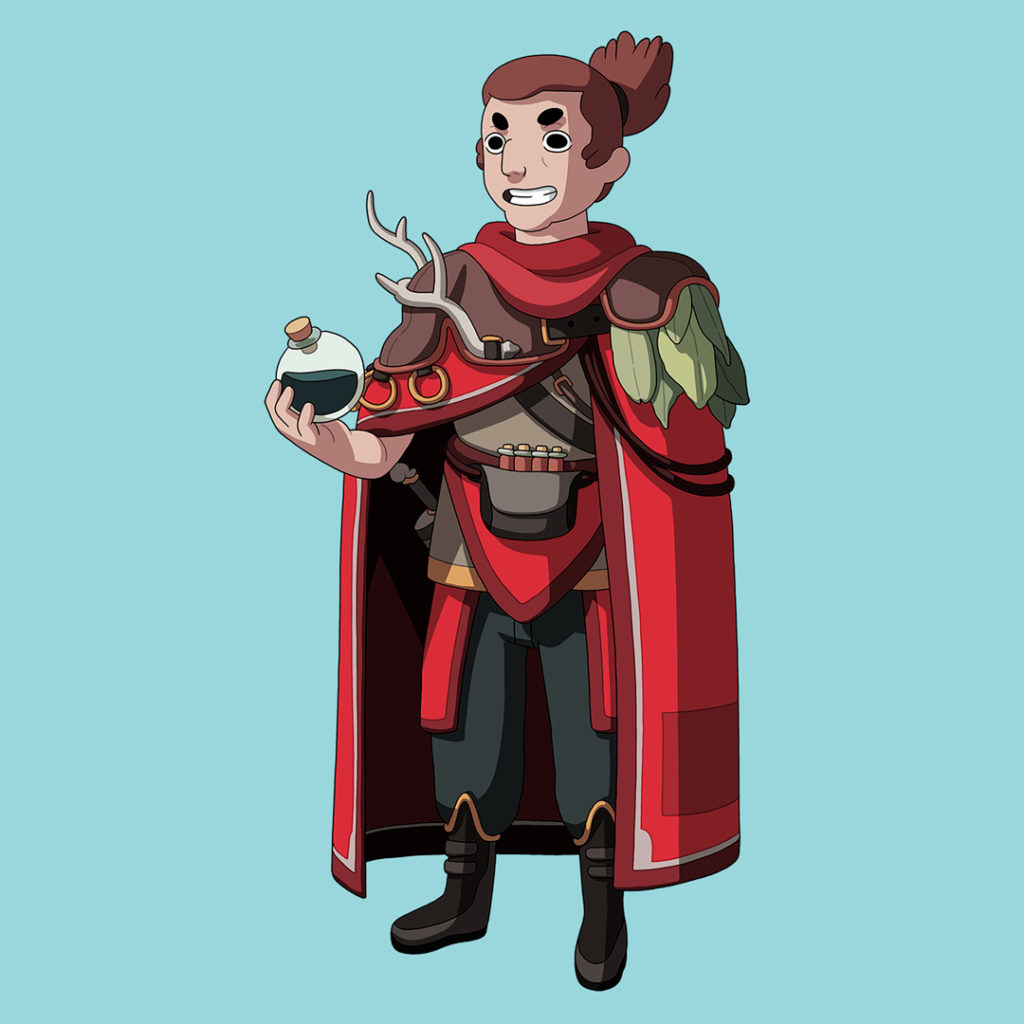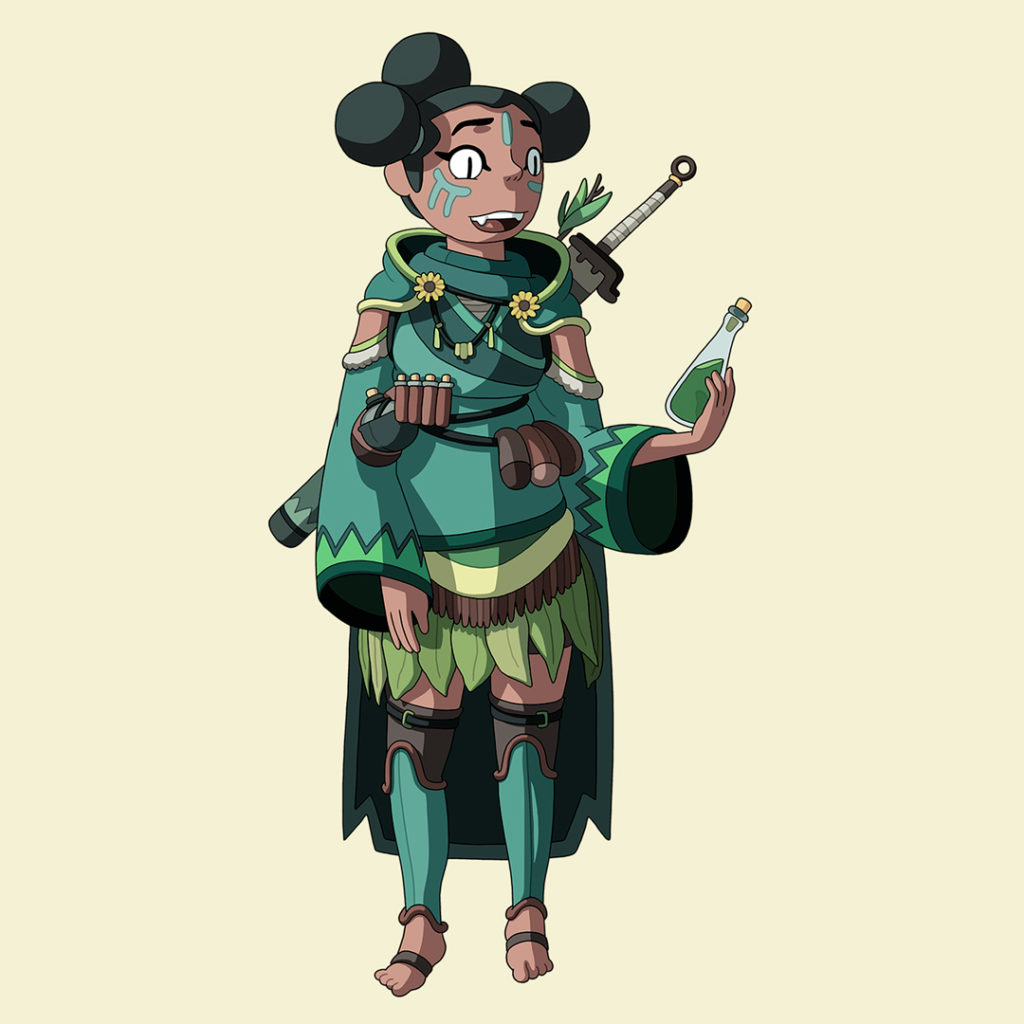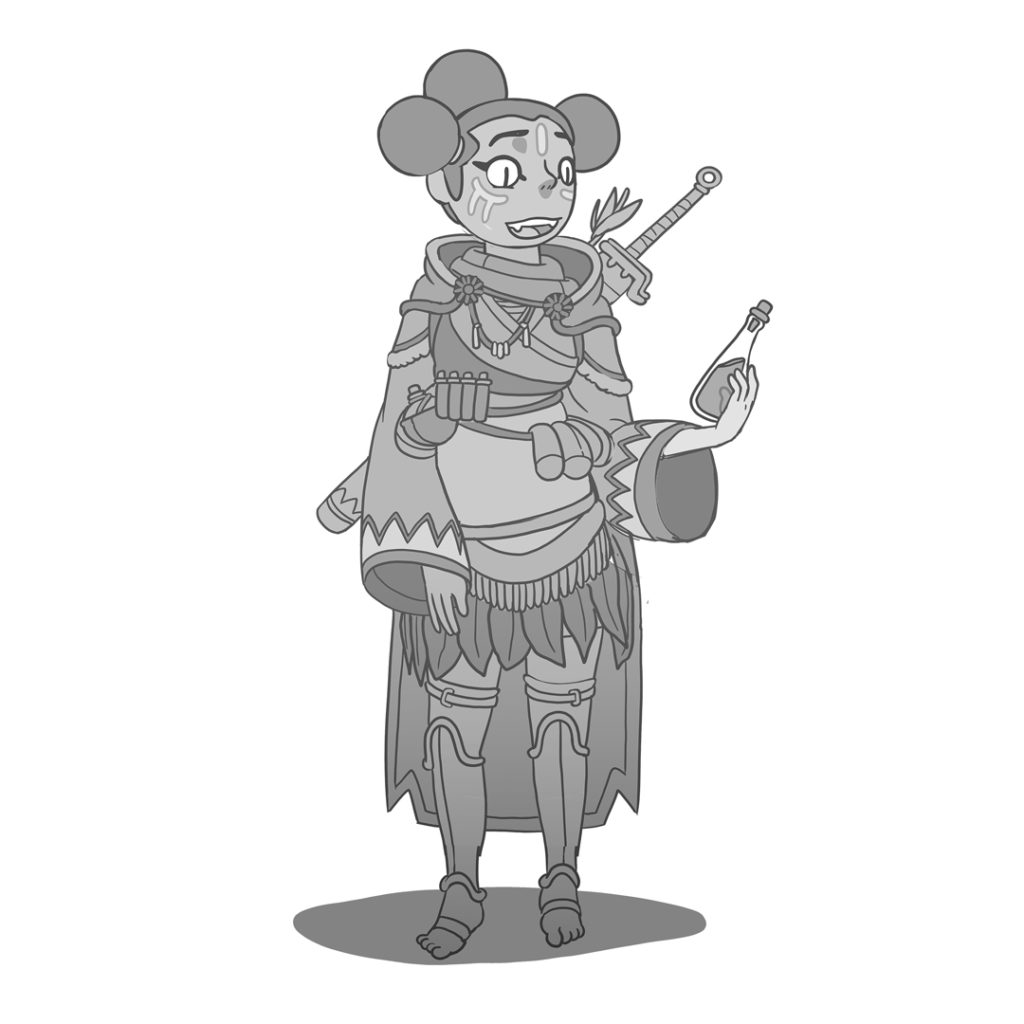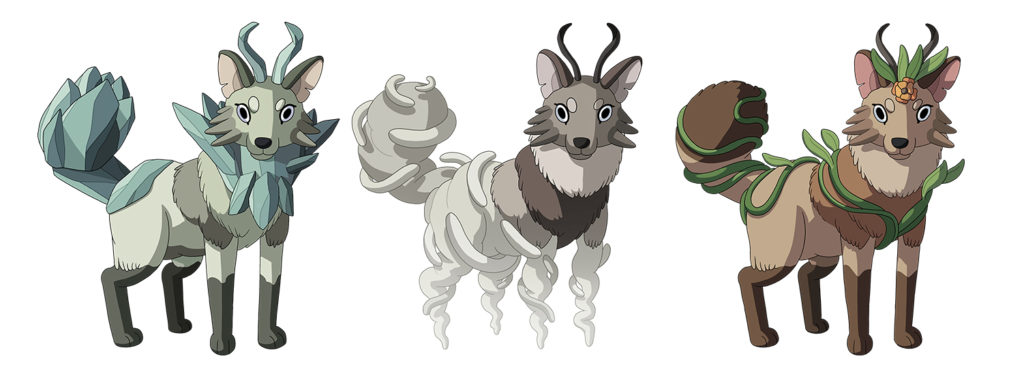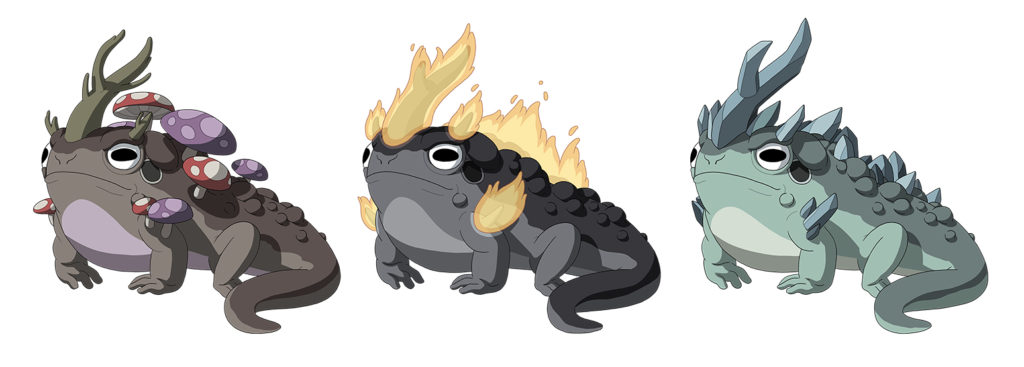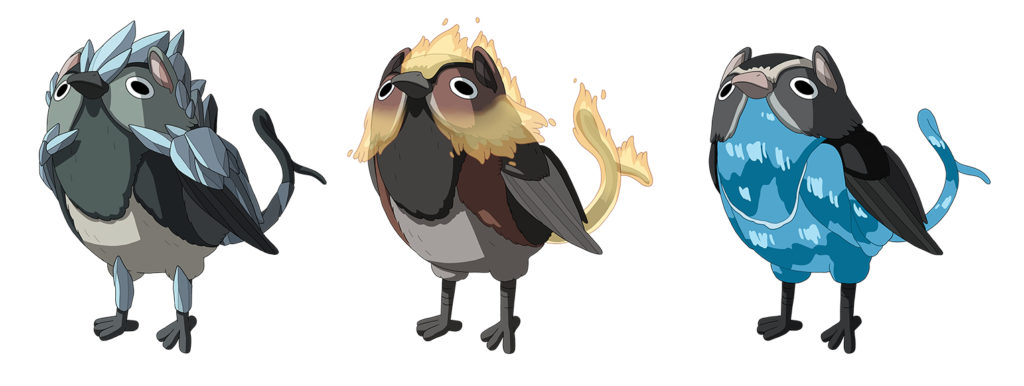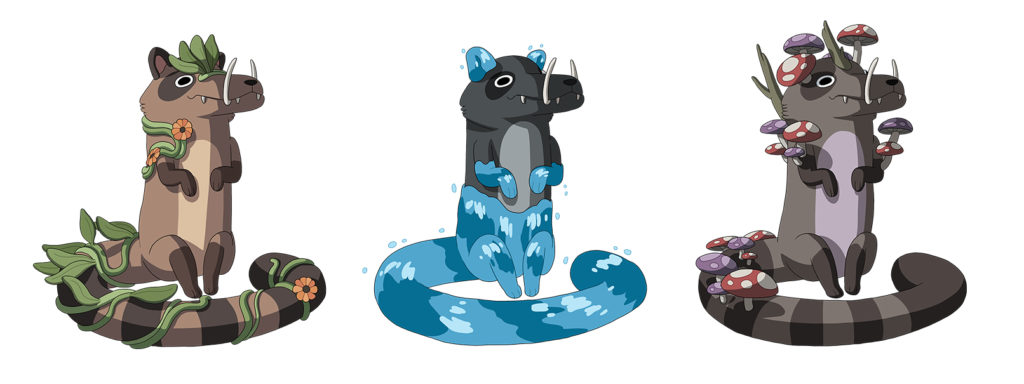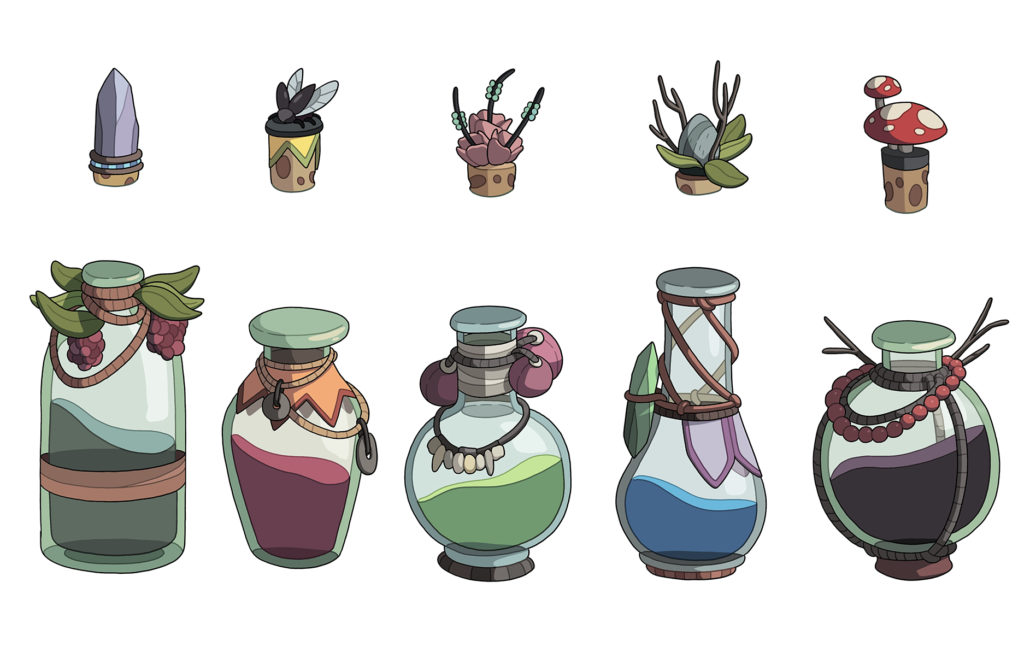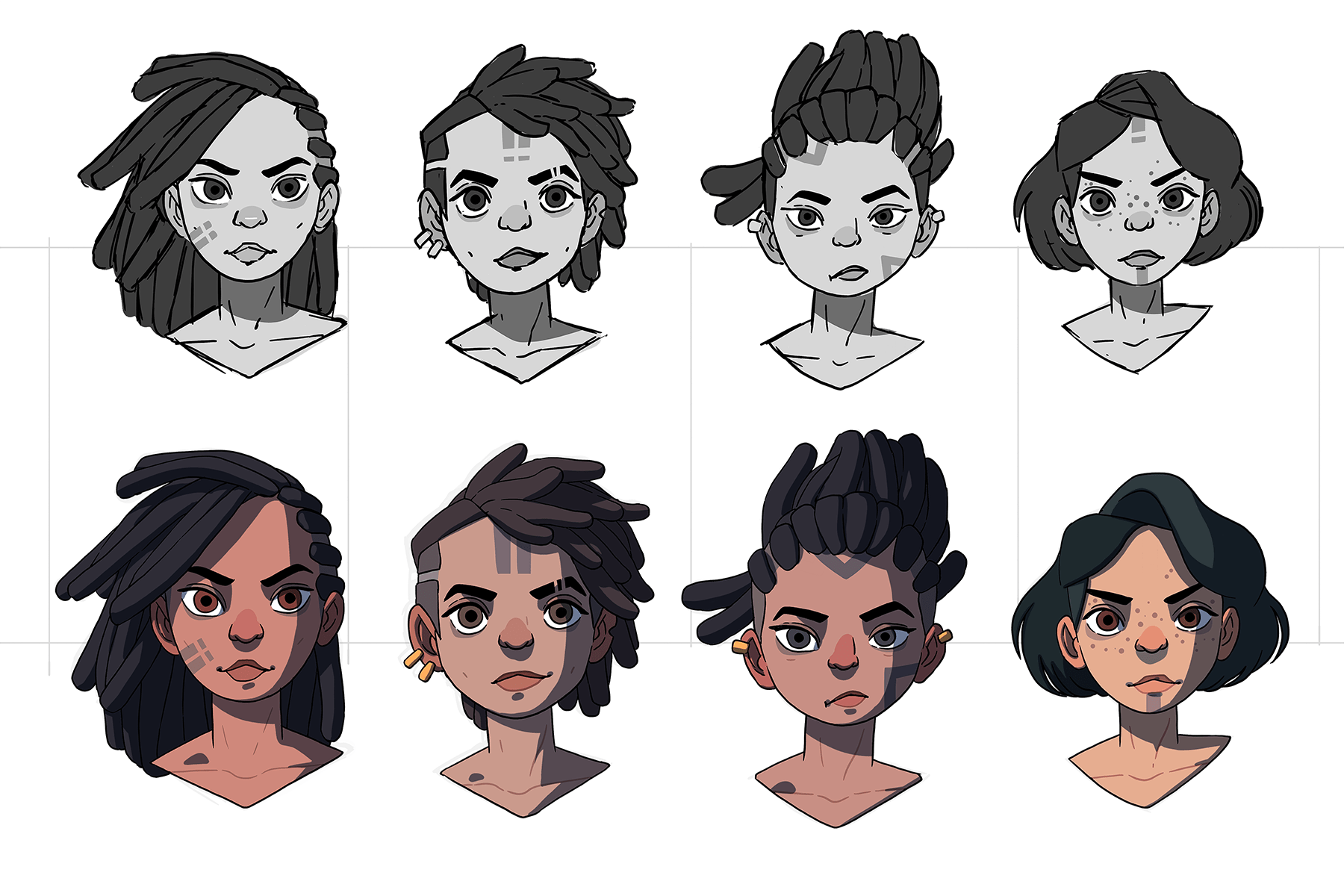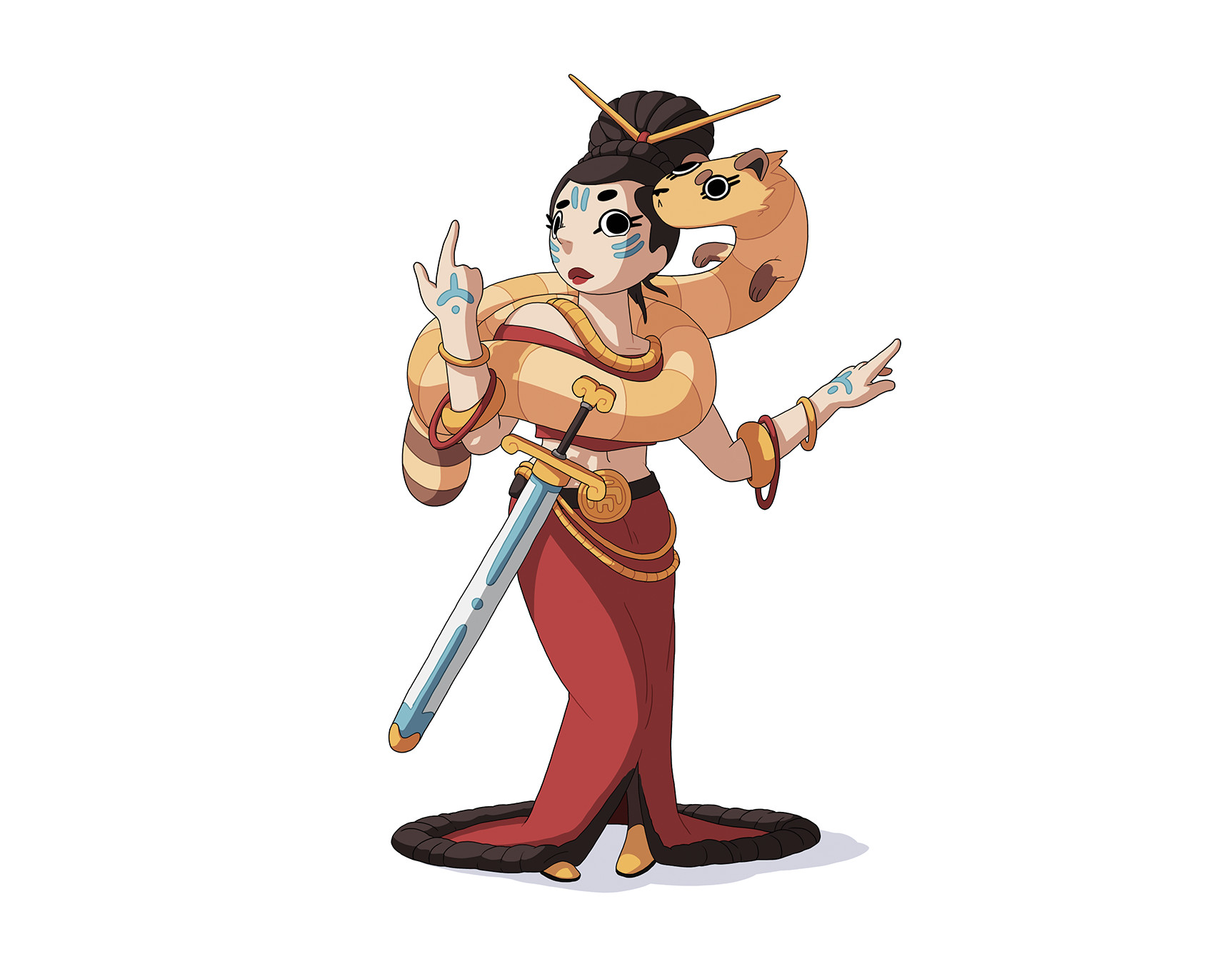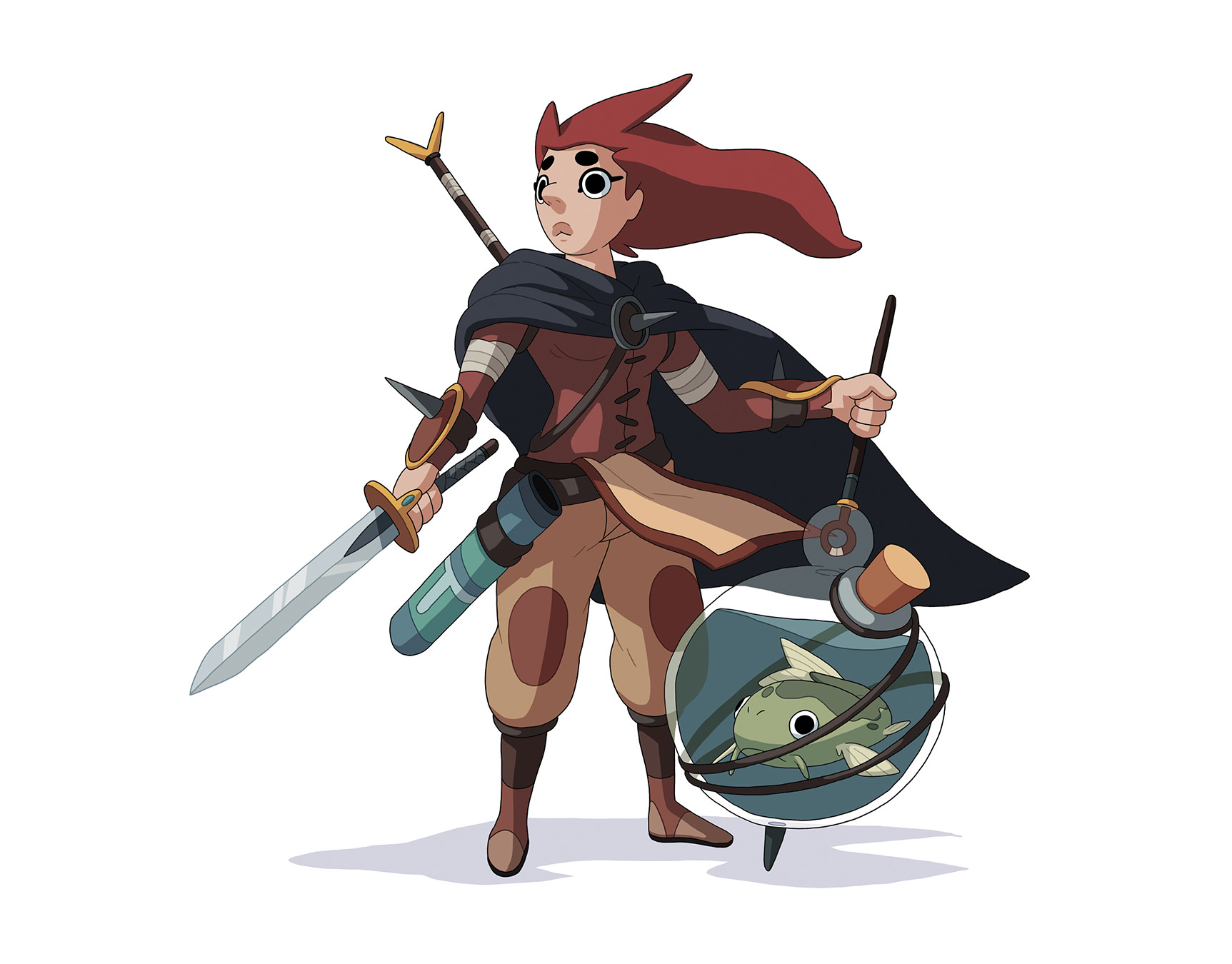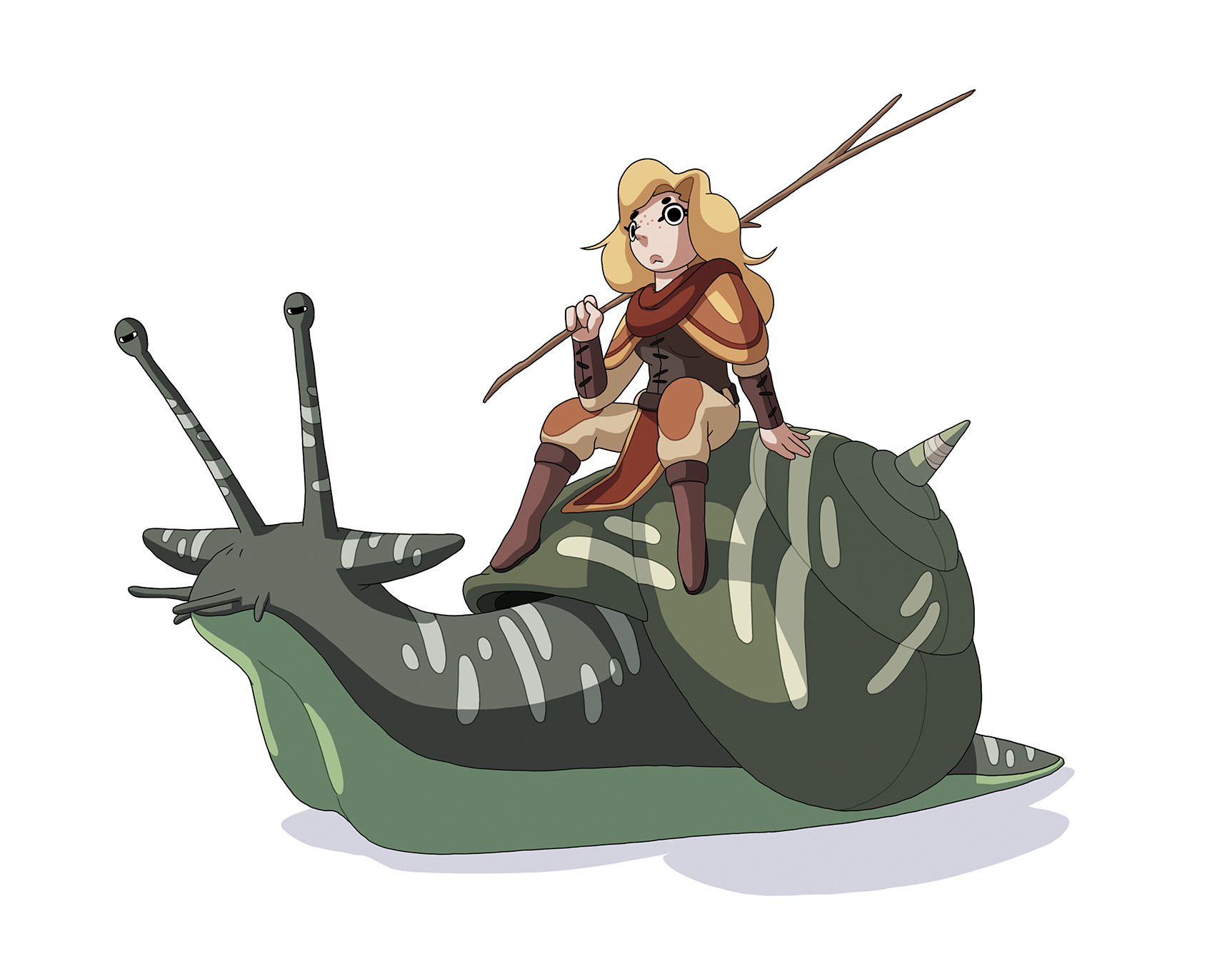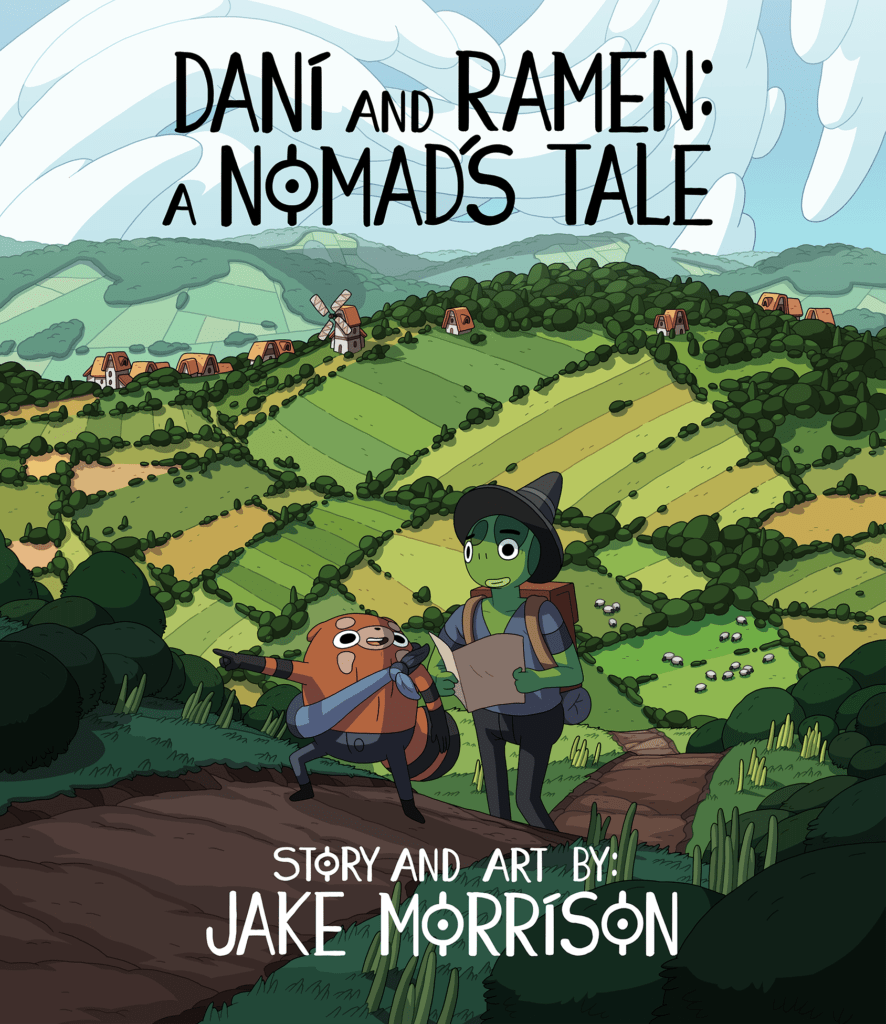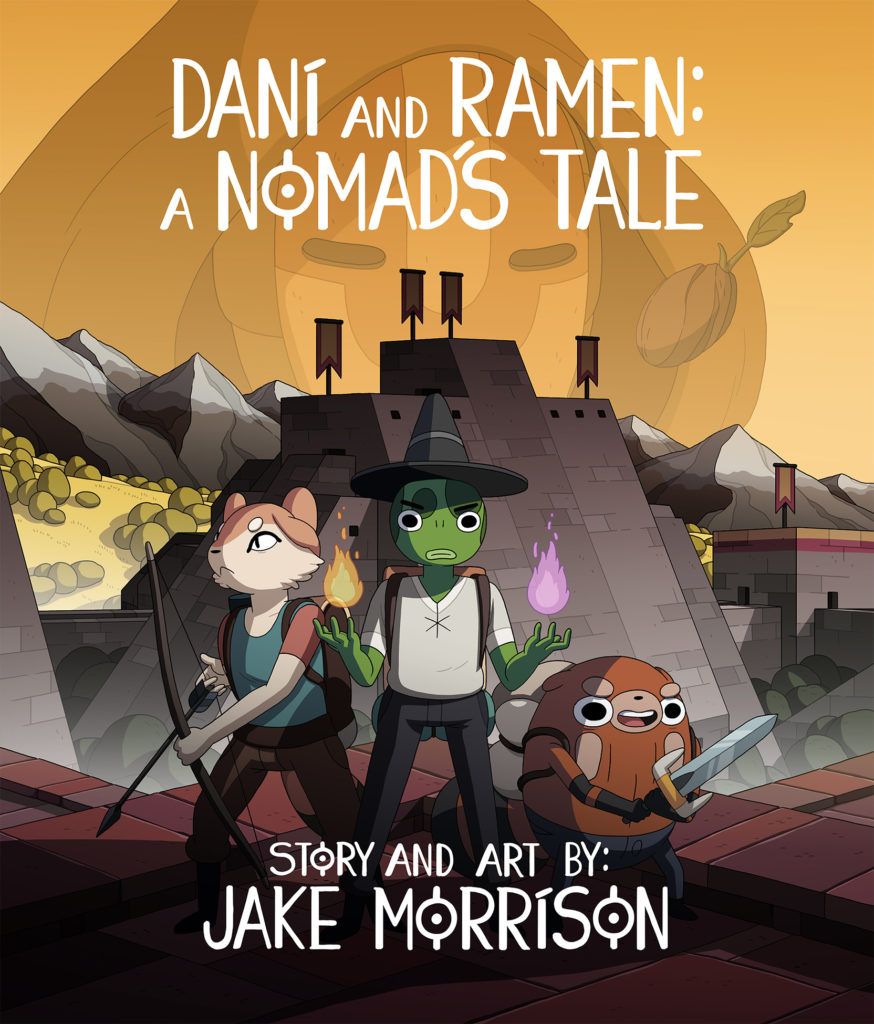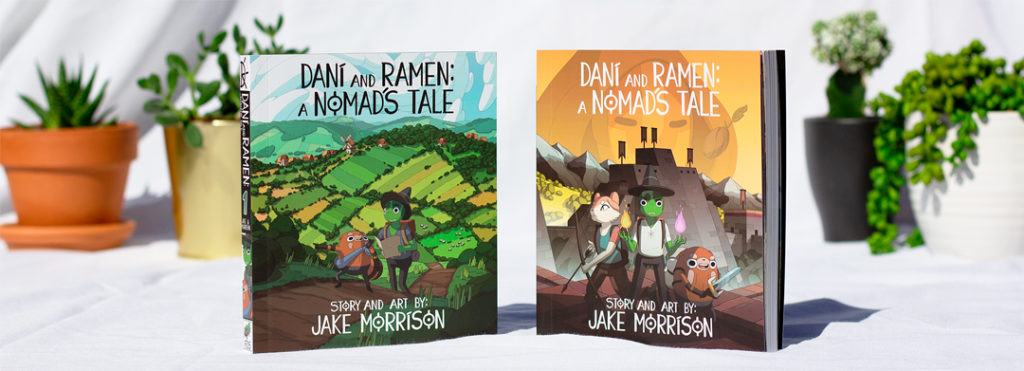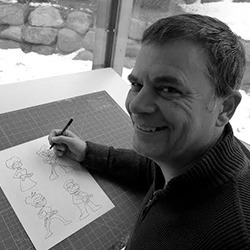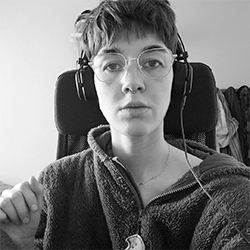
Desde que descubrimos el juego de mesa Brew quisimos hablar con Jake Morrison para que nos contará como se creo esté fantástico juego, Jake es un joven ilustrador con un talento y profesionalidad impresionante, con solo 24 años de edad ya ha creado una serie de novelas gráficas llamadas Dani and Ramen: A Nomad’s Tale que fueron financiadas en Kickstarter con gran éxito y actualmente tiene otro proyecto en campaña.
Jake nos hablará de cómo fue el proceso de creación de Brew y cómo fue su experiencia en su primer juego de mesa ilustrado. Brew estará muy pronto en castellano gracias a la editorial española Delirium Games. Para ir haciendo boca os invitamos a leer la entrevista para conocer su mágico arte.
Hi Jake, thanks for collaborating with us! For our readers who don’t know your work yet, could you tell us a bit about yourself and your professional career?
Hello! So my professional career began shortly after dropping out of college. I was already getting steady client work, but things really took off when I started getting work from Dreamworks TV and Greenbrier Games. After that I worked with a few more animation studios, but mostly focused on making my own comics. Since then I’ve just been balancing personal and professional work. However, I’m only 24 so I have a long ways to go.
I have to say that the illustrations in your portfolio are absolutely beautiful. What inspirations or references would you say have influenced your work or style today?
In the beginning, my primary inspirations were Cartoon Network shows, but more recently I’ve been heavily drawn to Moebius comics as well as Ghibli movies. I just really love the simplicity of using lines for everything, and also I hate rendering haha.
Let’s talk about one of your first illustrated board games Brew. A fantastic and fun game that takes place in a land of magic that is being overtaken by darkness. How did you get involved in the project and what made you want to participate?
With Brew, they approached me from ArtStation I believe. It was a bit of a process, but the team was very professional. I didn’t know the mechanics of the game (and am still figuring it out), so I just focused on making the best art I could with their instructions. I wanted to participate because I appreciated the theme, and wanted to try my hand at another board game.
How was the process of creating Brew? Tell us about that process, from the first ideas to the magnificent final artwork.
I joined a little later, when things mostly seemed worked out. It involved creating a ton of tiny assets for the cards, so the game designer (Stevo Torres) could build the environment himself. The visual themes were fairly clear so the only challenge was getting the ideas down on paper. I really enjoyed making the main characters, as well as putting together the other super cool assets.
In Brew we have to restore the natural balance with the help of some magical animals. How was the documentation and creation process for these adorable creatures?
For me, I just had to make about 4 or 5 variations of each of the critters. I left a little early, so some of them were created by Stevo. Similar to Avatar the Last Airbender, the creatures are sort of hybrids that have elemental properties, which is always a recipe for a fun time.
For the art of Brew you have worked with great professionals like Stevo Torres and Andrew Thompson. How was the experience of working with them?
For the most part, it was very smooth. Of course working remotely always has it’s own set of challenges, but they’re professionals who have a lot of experience and wisdom in the arena of game design.
During the process of creating Brew, which parts were the most challenging and how did you solve them?
Personally, I always find juggling all of my projects to be the biggest hurdle. I have the habit of accepting all incoming work, so sometimes I have 4 different clients requesting my attention and it gets to be a lot. I recommend that everyone make as many lists as possible to sort yourself out. It helps immensely and you’d be surprised how many hours are in the day.
Let’s talk about colour and its importance in the game. Why did you use that colour range in Brew and what role does it play during the game (setting, usability, psychology…)?
I personally chose certain colors because this is meant to be a light, refreshing game. Even the night time scenes. With silly art like mine, it’s best sometimes to not take yourself too seriously and just make fun, delicious art that’s easy to consume and fun to play.
What advice would you give to our readers who want to draw characters full of life and personality like yours?
The most important thing is to have fun with your art. Even if you’re getting paid for it, you have to treat it as if you’d be doing it for fun anyways. I don’t always take my own advice, and often get caught up with the money or exposure, so oftentimes I have to remind myself of this. Make friends with your characters, and try to immerse yourself in the world you’re building.
We don’t want to finish the interview without congratulating you for your great work in the graphic novel series called Dani and Ramen: A Nomad’s Tale of which you are the author. What inspired you to create it and why should we read it?
Oh thank you! Originally I made the comics as a replacement for a TV animation pitch bible. It was my first try at writing and making a sequential story at that scale, and I gotta say it was mostly just a good fun time. It revolves around environemntal themes of deforestation, and corruption. It’s a great read for kids or if you like reading light, funny banter.
Finally, do you have any new or upcoming projects you want (or can) tell us about?
As a matter of fact, I do! I’ve got irons in the fire with Fuzzybot Games, and an old/ new project with Greenbrier Games called Fire for Light. In addition to that, I’m making a tarot card deck, and starting two new comic series. I’ll be launching the first one January 24th on Kickstarter. The games are still under NDA, so keep your eyes peeled for them in the future.
Muchas gracias Jake 😉
(Todas las imágenes cedidas por Jake Morrison)

